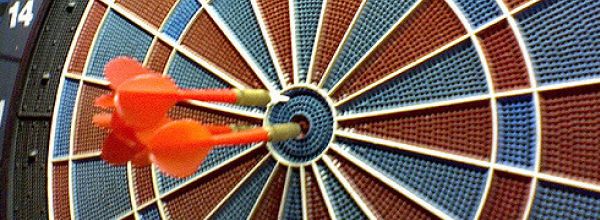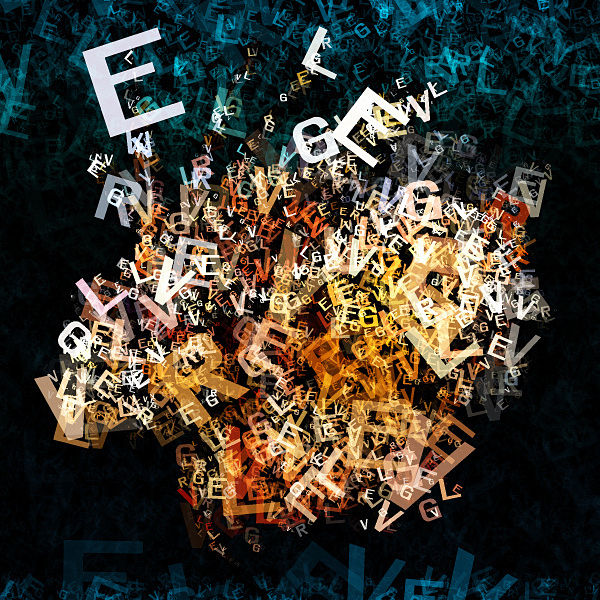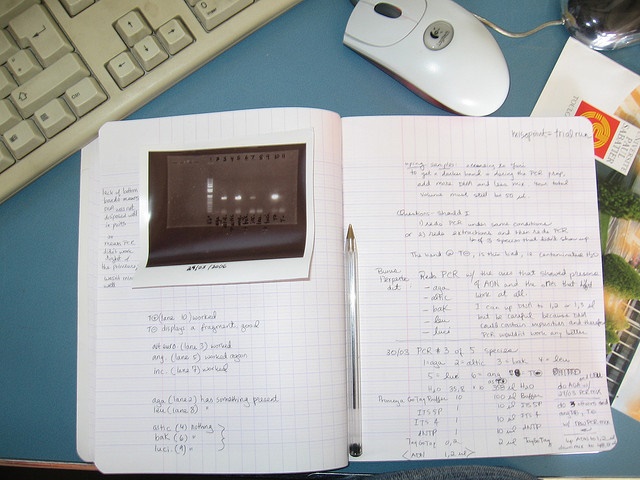In the modern science era, the words polymerase chain reaction (PCR) are synonymous with a technology that teleported biomedical research into a new era. PCR is a powerful technique that allows us to analyze and edit DNA, the genetic template that stores vital biological information and controls gene expression.
Variations on conventional PCR emerge at such a fast rate that there are now more than 50 ways to carry out PCR! (you can check out our dedicated PCR channel here). Many of the PCR variations available were designed to facilitate gene editing (e.g. introducing, deleting or modifying genetic sequences), and gene expression analysis, providing an abundance of information which has made huge impacts on many fields of research and medicine.
Nowadays it is fairly straightforward to introduce a point mutation in a gene of interest to study its function, or engineer molecular ’tags’ in a native gene, so that it can be readily purified later. You might even want to ‘stitch-in’ a fluorescent tag, such as GFP, to visualize the protein of interest. The possibilities are endless!
Quantitative PCR—a breakout PCR success!
Quantitative PCR (qPCR) is probably one of the most important PCR spin-offs to date. As the name suggests, qPCR allows you to quantify DNA, and it is not surprising that qPCR has found use in as broad range of applications such as:
- Cancer diagnostics – either by estimating DNA copy number variations (CNVs) for genes known to be involved in certain cancers, or comparative expression analysis of healthy vs. disease samples to gain a better understanding of the mechanisms underlying cancer.
- Food Safety and Public Health – microbiological assessment of water quality (drinking and recreational), food spoilage and safety assessment (e.g. salmonella testing), identification of new infectious disease outbreaks.
- Clinical quantification and genotyping – measurement of viral load in patient groups (e.g. monitoring HIV+ patients), safety assessment of blood donations, discovery of new SNPs which may play roles in human disease
During qPCR, amplification of your target sequence(s) is monitored in real-time using fluorescent probes or DNA dyes, providing you with quantitative information about your DNA of interest with much more resolution than you could ever expect with conventional PCR. You can find out much more about qPCR here.
Despite its many uses, qPCR possesses a couple of drawbacks. For one, qPCR requires either the inclusion of an external calibrator to quantify the target DNA (via a standard curve) or normalization to an endogenous control (housekeeping gene). In addition, inconsistent amplification efficiencies between primer pairs may reduce quantification accuracy. These drawbacks may limit the use of qPCR for quantifying and comparing very subtle changes in gene expression or CNV.
In this article, we will take a look at digital PCR (dPCR), a next generation qPCR technology that may be your solution to quantification and comparison of the most minute CNV or gene expression changes.
A New Frontier in PCR – Digital PCR
Digital PCR is an end-point analysis assay, meaning that data is collected at the end of the assay (as opposed to qPCR where amplification is monitored as PCR progresses). Sample nucleic acids for dPCR are similar to those used in qPCR (e.g. cDNA, blood DNA).
Digital PCR (dPCR) allows the detection of rare events (e.g. SNPs) in a population of wild-type sequences. In qPCR, signals from wild-type sequences often dominate, thus obscuring the detection of rare sequences. dPCR inherently minimizes the effects of competition between targets, thereby allowing you to detect rare targets, resulting in very sensitive and precise absolute quantification of nucleic acids.
How dPCR minimizes competition between targets?
- Prior to PCR, each sample is diluted into discrete aliquots in a process known as sample partitioning. Each aliquot is diluted to ideally contain either one or zero template molecules. Depending on the dPCR system, sample partitioning can either be done on microchips, microfluidic plates, or droplet dispersion systems. This approach is similar to the limiting dilution approach in conventional PCR (1).
- Each dilution or partition behaves as an individual PCR reaction and, as with real-time PCR, fluorescent probes are used to identify amplified target DNA.
- At the end of PCR, each partition is readily analyzed to determine whether or not it contains the target sequence. Samples containing amplified product are considered positive (1, fluorescent), and those without product are deemed negative (0, emitting little or no fluorescence).
Additional Protocol Notes:
- It is sometimes necessary to digest sample DNA prior to sample partition. This is the case when analyzing large quantities of genomic DNA (gDNA). The amount varies from protocol to protocol but digestion is often recommended for > 75 ng gDNA.
- DNA size selection may help you to enrich your samples for short DNA fragments amongst a pool of larger DNA fragments (e.g. examining fetal DNA in cell-free maternal DNA). This may be achieved either through chromatography (to exclude larger fragments) or restriction digestion.
Analyzing dPCR Reactions
The ratio of positive to negative partitions in each sample forms the basis for quantification. Unlike qPCR, digital PCR is not reliant on a particular number PCR cycles (cT value) to determine the starting amount of template in each sample. Instead, it uses Poisson statistics to determine the absolute template quantity, as outlined below:
The Poisson equation:
? = -ln (1 – p),
Where ? is the average number of target DNA molecules per replicate reaction and p is the fraction of positive end-point reaction (2).
Advantages of Digital PCR
dPCR is a very straightforward, sensitive, and accurate method to quantitate DNA copy number. In addition, it offers a number of advantages over traditional qPCR, as outlined below:
- dPCR does not require a reference for calibration or endogenous gene for normalization.
- It offers high sensitivity and good dynamic range. The sensitivity is directly proportional to the number of DNA partitions used, with a greater number of partitions resulting in higher overall resolution. Therefore, dPCR is ideal to detect and quantify rare genetic occurrences, such as CNV. It has been estimated that to detect the difference between 2 or 3 copies of a gene, approximately 200 partitions are required. On the other hand, a minimum of 8000 partitions are needed to distinguish between 10 and 11 copies (3).
- dPCR provides absolute quantitation whereas qPCR gives relative quantitation based on the type of standards. In a conventional qPCR, serial dilution of DNA with a known concentration is used to quantitate the unknown samples. This approach (called absolute quantification) It is only accurate if you are absolutely certain about the standards that you are working with. In dPCR, absolute quantitation is carried by looking at the number of positive versus negative signals using the Poisson equation. By eliminating the need for other standards, you reduce the risk of error.
Major Applications for Digital PCR
Liquid biopsy : Less invasive than a traditional biopsy, this involves sampling patient blood or other biological fluids (e.g. urine or sweat) to monitor disease-associated biomarkers. It is well known that certain tumor cells shed DNA into the blood. This cell-free DNA (cfDNA) may be scarce, but is detectable due to the sensitivity of digital PCR, and consequently great efforts are underway to develop robust and reliable digital PCR detection methods for a range of tumor biomarkers. To date, methods have been established for detecting markers associated with lung, colorectal and skin and breast cancers.
Copy number variation (CNV) analysis: Differences in gene copy number between individuals has been associated with certain diseases. For example, a high copy number of the ERBB gene is associated with aggressive forms of breast cancer (4). The dPCR platform offers greater accuracy and sensitivity than other PCR-based methods, and is ideal for quantitation of small differences in gene copy numbers. Therefore, dPCR can be used to quantitate and monitor minute differences in CNVs that could account for the difference between a healthy tissue and a diseased tissue.
Gene expression, rare sequence detection and single cell analysis: dPCR does not require the generation of standard curves or normalization to housekeeping genes, making it ideal for the detection and quantitation of weakly expressed genes. Additionally, dPCR is sensitive enough to reliably detect very subtle changes in gene expression (down to 2-fold differences).
Pathogen detection and microbiome analysis: Certain pathogens are present at low abundance, which makes traditional qPCR a hassle to perform. Use of dPCR offers unprecedented accuracy without the need to implement internal standard controls allowing you to save time and money in the long run.
Digital PCR technology is already on the market. While it will take some time for scientists to adopt to this new technology, it is tempting to speculate that dPCR will eventually replace the conventional qPCR technique. The combination of dPCR with next generation sequencing technologies is likely to be a monumental turning point for modern day genomic analysis.
Have you used dPCR technology in your research? Let us know in the comments below!
References:
- Sykes, P. J., S. H. Neoh, M. J. Brisco, E. Hughes, J. Condon, and A. A. Morley. “Quantitation of Targets for PCR by Use of Limiting Dilution.” BioTechniques 13, no. 3 (September 1992): 444–49.
- Hindson, Benjamin J., Kevin D. Ness, Donald A. Masquelier, Phillip Belgrader, Nicholas J. Heredia, Anthony J. Makarewicz, Isaac J. Bright, et al. “High-Throughput Droplet Digital PCR System for Absolute Quantitation of DNA Copy Number.” Analytical Chemistry 83, no. 22 (November 15, 2011): 8604–10. doi:10.1021/ac202028g
- Baker, Monya. “Digital PCR Hits Its Stride.” Nature Methods 9, no. 6 (June 2012): 541–44. doi:10.1038/nmeth.2027.
- Peiró, G., D. Mayr, P. Hillemanns, U. Löhrs, and J. Diebold. “Analysis of HER-2/neu Amplification in Endometrial Carcinoma by Chromogenic in Situ Hybridization. Correlation with Fluorescence in Situ Hybridization, HER-2/neu, p53 and Ki-67 Protein Expression, and Outcome.” Modern Pathology 17, no. 3 (January 30, 2004): 277–87. doi:10.1038/modpathol.3800006.






